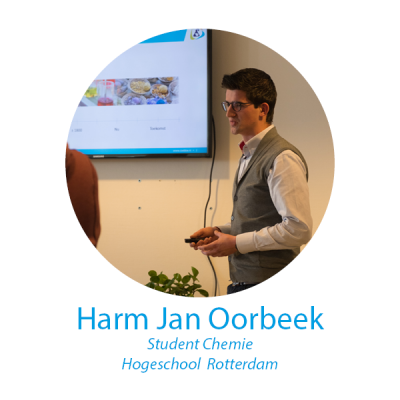 “My name is Harm Jan Oorbeek, now a student at the University of Amsterdam, where I am following a pre-master in preparation for the master Analytical Sciences. To complete my previous education (HBO Chemistry at the Hogeschool Rotterdam) I did my graduation internship at the CoE BBE.
“My name is Harm Jan Oorbeek, now a student at the University of Amsterdam, where I am following a pre-master in preparation for the master Analytical Sciences. To complete my previous education (HBO Chemistry at the Hogeschool Rotterdam) I did my graduation internship at the CoE BBE.
Here, within the Biobased Products lectorate, I researched the biobased blue dye phycocyanobilin (PCB) as part of the Interreg project “The Blue Chain”. The coloring agent PCB occurs naturally in cyanobacteria such as Spirulina platensis, which absorb light through this substance that is used during the process of photosynthesis. The problem presented to me at the beginning of the internship was the poor stability of PCB to light, because PCB lost its color after several hours of exposure to daylight (in the presence of oxygen). Due to this so-called photo-oxidation, the practical applicability as a colorant for paper and textiles would be very limited.
During the research an attempt was made to improve stability by adding antioxidants to PCB. The idea behind this is that these antioxidants form a complex with PCB, sacrifice themselves for PCB in the photo-oxidation process and thus improve the “stability” of the blue color.
After conducting all kinds of experiments, it has been concluded from this research that the color of PCB is not sufficiently stabilized by the addition of antioxidants when it is exposed to light for a long time. This makes it unsuitable for the aforementioned application as a long-lasting dye for paper and textiles. However, PCB could be a very suitable coloring agent for single use products, such as tisseus.
– September 2018
